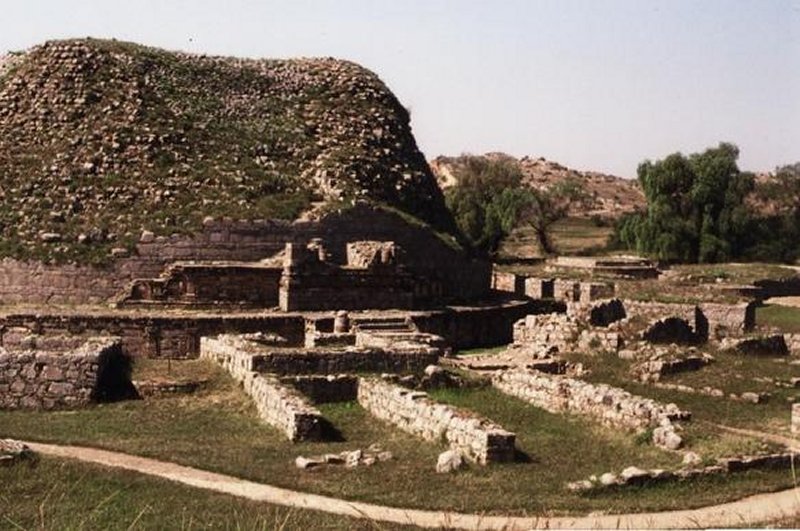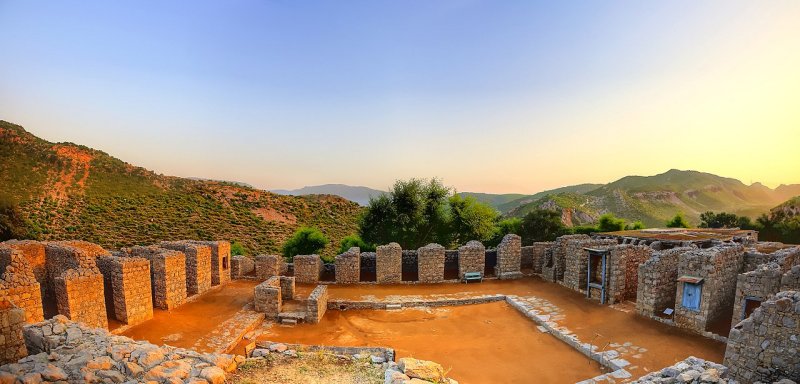Takshashila: Renowned Learning Center That Attracted Buddhist Masters, Disciples And Students Of The World
A. Sutherland - AncientPages.com - According to available ancient references, Takshashila was the first and earliest Buddhist center of Vedic learning, and the city of Takshashila itself also flourished as the center of trade and commerce, which took place under the early dynasties of rulers.
The Dharmarajika Buddhist monastery — ruins at the Dharmarajika, Taxila archaeological site. Located in ancient Taxila — in Punjab Province, Pakistan. Image credit: source
Scholars date back this ancient university to approximately 400-500 BC to 550 AD, which means it gained its reputation at least several centuries before Christ and maintained its prominence until the city's destruction in the 5th century AD.
The city is said to have been founded by the son of the legendary hero Rama's brother.
According to the Ramayana, Lord Rama's brother Bharata established two important cities Takshashila and Pushkalavati, and installed his two sons Pushkala and Taksha, to rule over them.
This prestigious, ancient university, named after "Taksha's Cut-Rock City" in old northern India, has a perfect location on a branch of the Silk Road that connected China to the West. In Sanskrit, Takshashila is derived from 'Taksha' and 'shila' (rock) and describes the foundation rock laid by Bharata's son Taksha for the city.
In the later Pali (Buddhist) language, the city is called 'Takkasila.'
On the other hand, the Greeks referred to it as 'Taxila,' and so it remained over the millennia until today. They also described Takshashila as "wealthy, prosperous and well-governed."
Taxiles King Ambhi (Greek: Omphis) offering presents to Alexander, Image credit: François Verdier 1651 Paris 1730 - Public Domain
The Ramayana describes Takshashila as a magnificent city famous for its wealth and splendor, and the great Mahabharata refers to Takshashila as the place where among others, the Kuru kingdom's heir and grandson of Arjuna, Parikshit, was crowned at the city of Takshashila.
At the time, TakshaShila was described as the wealthiest city in India. The campus attracted students from faraway places. Not only Indians but also students from Babylonia, Greece, Phoenicia, China, Arabia, and Syria studied at Taxila. They could choose from a wide range of subjects such as Vedas, philosophy, medicine, surgery, language, grammar, politics, archery, warfare, astronomy, astrology, accounts, commerce, futurology, documentation, occult, music, and dance.
It is believed that students started their studies at Takshashila at around age 16 after they had completed their primary education at home and secondary education in the Ashrams. Education was considered sacred, and according to an ancient quote written in Sanscrit: "A fool is worshipped at his home, a chief is worshipped in his town, a king is worshipped in his kingdom, and a knowledgeable person is worshipped everywhere."
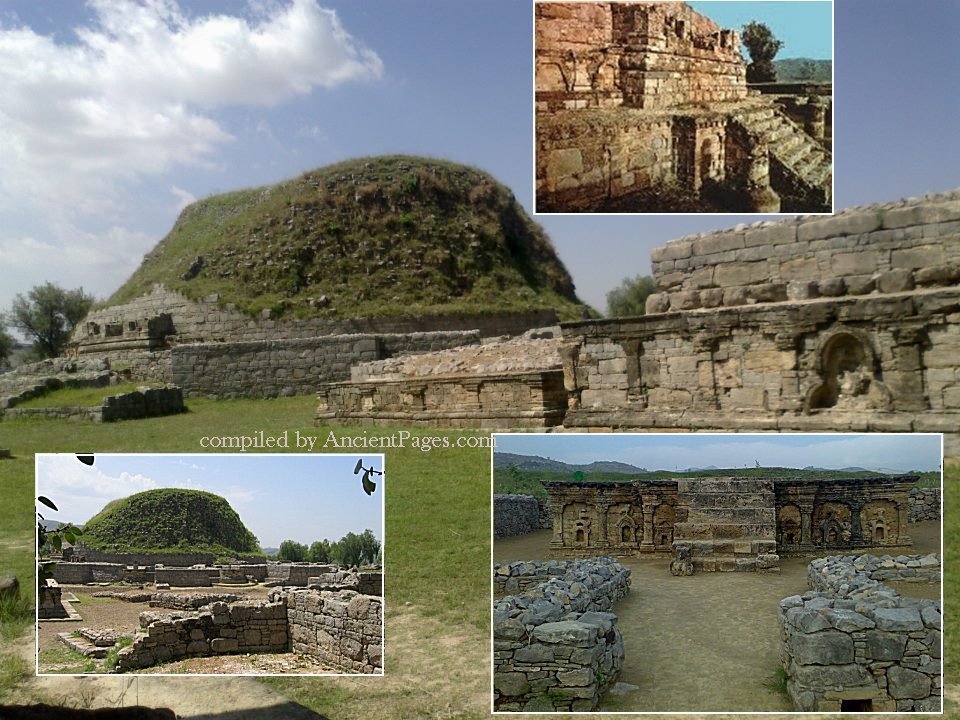 Takshashila ruins are located in the Rawalpindi District of the Punjab province in Pakistan.
Takshashila ruins are located in the Rawalpindi District of the Punjab province in Pakistan.
All of the subjects were taught by experienced masters.
According to ancient references, when Alexander The Great's forces entered Punjab in the fourth century BC, Takshashila had a prestigious reputation as a seat of learning. Alexander took many scholars from there with him on his way back to Greece.
Takshashila is described in 'Jataka tales' written in Sri Lanka and dated between 300 BC and 400 AD.
The 'Jataka tales' are a voluminous collection of sacred Buddhist literature native to India, used commonly in preaching by monks and unprofessional preachers in all Buddhist countries. Many stories tell about the previous lives of the Buddha, in both human and animal forms.
The Buddhist Jataka tales, especially the Takshashila Jataka, refer to the city as the capital of the Gandhara kingdom and describes it as a great seat of learning. However, Takshashila is best known for its association with Chanakya (also known as Kautilya or Vishnu Gupta (c. 370–283 BC). Chanakya was an Indian teacher, philosopher, and royal adviser. He was initially a professor of economics and political science at the ancient Takshashila University in Takshashila (in present-day Pakistan.)
Chanakya (or Kautilya), the Maurya Emperor Chandragupta, and the Ayurvedic healer Charaka (Sanskrit Caraka) are principal contributors to the ancient art and science of Ayurveda, a system of medicine and lifestyle developed in old India studied at the famous Taxila.
Ruins in a Buddhist Monastery, Jaulian, Taxila. Image credit: Faran Shehryar Malik - CC BY-SA 4.0
Generally, a student entered Takshashila at the age of sixteen, which was the minimum entrance age was 16, and there were 10,500 students. The ruins of Taxila contain buildings, Buddhist stupas located over a large area, and many Buddhist monasteries.
There is some disagreement about whether Takshashila can be considered a university. While some think of the place as an early university or center of higher education, others do not consider it a university in the modern sense, in contrast to the later Nalanda University.
Earliest History Of Prominent Vedic Center Of Learning
"The earliest history of Takshashila can be traced to around 3360 BC, based on the findings excavated in the region. However, it is believed that the place was abandoned after the decline of the Indus valley civilization. The first major settlement at Takshashila developed around 1000 BC.
Jaulian Buddhist Monastery, Takshashila. The picture shows the bathing pond (now filled with clay), living quarters, and stupa remain (at the right corner). Image credit: MohammadOmer - CC BY-SA 3.0
The region came within the eastern borders of the Achaemenid and Hellenistic Empires when they attacked the Indus valley region and held control over it for a few centuries. The Achaemenid rulers, King Darius I and King Xerxes, stationed their generals in the area to explore the Indus valley area. Alexander the Great was able to take control of Takshashila in 326 BC without a fight." 1
Decline of Takshashila
It was a devastating time for both the Gandhara Kingdom and Takshashila as well. During the final part of the Gupta period (450 AD), Takshashila fell in between the three-way war between the Persians, the Kidarites, and the White Huns of western Gandhara. Many Buddhist monasteries and stupas of Takshashila were destroyed. This critical situation caused extensive damage to the living settlements and, at the same time, largely disrupted the functioning of the university.
"By 540 AD, the Huns had completely taken over the region and ruled in Takshashila, continuing sporadic devastation and damage. It was a blow from which the city could never recover.
It was the time of rebirth of the essential cults of Hinduism like Vaishnavism and Shaivism. After almost a thousand years of Buddhist dominance began to fail along with the renowned Takshashila.
The Chinese monk and traveler, Hieuen Tsang, wrote that "most of the Buddhist sangharamas [in Sanskrit: संघाराम Saṃgharāmalay means "temple" or "monastery"] ruined and desolate and only a few monks remained there. The city had become a dependency of the Kashmir kingdom with local rulers fighting for its control…."
Undoubtedly, Takshashila was the renowned seat of education in the Buddhist tradition, both religious and historical, and as such, the place will always be remembered.
Written by – A. Sutherland - AncientPages.com Senior Staff Writer
Copyright © AncientPages.com All rights reserved. This material may not be published, broadcast, rewritten or redistributed in whole or part without the express written permission of AncientPages.com
Expand for referencesReferences:
Sayan Bhattacharya, Ancient Cities of India
Allchin R, Allchin B, The Rise of Civilization in India and Pakistan
Encyclopædia Britannica. 2007
More From Ancient Pages
-
 Stunning Discovery Of 1,000-Year-Old Knight’s Sword From Reign Of Poland’s First King Bolesław The Brave
Archaeology | Jul 28, 2022
Stunning Discovery Of 1,000-Year-Old Knight’s Sword From Reign Of Poland’s First King Bolesław The Brave
Archaeology | Jul 28, 2022 -
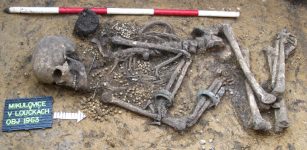 Central European Prehistory Was Highly Dynamic – New Study Shows
Archaeology | Aug 27, 2021
Central European Prehistory Was Highly Dynamic – New Study Shows
Archaeology | Aug 27, 2021 -
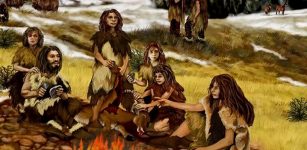 Disappearance Of Neanderthals: Were Inbreeding And Demographic Shifts Responsible?
Archaeology | Nov 28, 2019
Disappearance Of Neanderthals: Were Inbreeding And Demographic Shifts Responsible?
Archaeology | Nov 28, 2019 -
 Lost Ancient Golden City Of Vineta – The Atlantis Of The North
Featured Stories | Jun 27, 2023
Lost Ancient Golden City Of Vineta – The Atlantis Of The North
Featured Stories | Jun 27, 2023 -
 Skadi: Goddess Of Destruction, Giantess And Patron Of Winter Hunters And Skiers In Norse Mythology
Featured Stories | Dec 14, 2017
Skadi: Goddess Of Destruction, Giantess And Patron Of Winter Hunters And Skiers In Norse Mythology
Featured Stories | Dec 14, 2017 -
 Unique 1,000-Year-Old Medieval Golden Treasure Unearthed By Dutch Historian Using Metal Detector
Archaeology | Mar 24, 2023
Unique 1,000-Year-Old Medieval Golden Treasure Unearthed By Dutch Historian Using Metal Detector
Archaeology | Mar 24, 2023 -
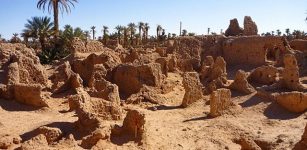 Mystery Of 3,000-Year-Old African Civilization Garamantes And Its Ancient Secrets
Archaeology | Feb 16, 2015
Mystery Of 3,000-Year-Old African Civilization Garamantes And Its Ancient Secrets
Archaeology | Feb 16, 2015 -
 On This Day In History: Terrorist Attacks On World Trade Center And Pentagon – On Sep 11, 2001
News | Sep 11, 2016
On This Day In History: Terrorist Attacks On World Trade Center And Pentagon – On Sep 11, 2001
News | Sep 11, 2016 -
 Prophetic Dream Revealed Priceless Ancient Treasure That Was Later Stolen Or Destroyed – Was The Discovery Too Dangerous?
Featured Stories | Jul 27, 2018
Prophetic Dream Revealed Priceless Ancient Treasure That Was Later Stolen Or Destroyed – Was The Discovery Too Dangerous?
Featured Stories | Jul 27, 2018 -
 Solar Cult Complex In The Temple Of Hatshepsut In Deir El-Bahari Reconstructed
Archaeology | Mar 2, 2015
Solar Cult Complex In The Temple Of Hatshepsut In Deir El-Bahari Reconstructed
Archaeology | Mar 2, 2015 -
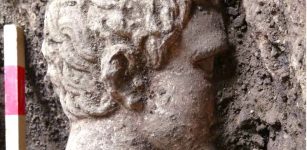 Incredibly Well-Preserved 2,000-Year-Old Statue Of Greek God Hermes Found In Heraclea Sintica, Bulgaria
Archaeology | Jul 12, 2024
Incredibly Well-Preserved 2,000-Year-Old Statue Of Greek God Hermes Found In Heraclea Sintica, Bulgaria
Archaeology | Jul 12, 2024 -
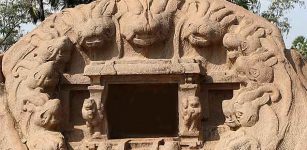 Tiger Cave: Rock-Cut Hindu Temple Complex Dated To East India’s Pallava Empire
Featured Stories | Jan 19, 2017
Tiger Cave: Rock-Cut Hindu Temple Complex Dated To East India’s Pallava Empire
Featured Stories | Jan 19, 2017 -
 Ancient Romans Used The Poisonous Black Henbane Plant As Hallucinogenic Medicine
Archaeology | Feb 9, 2024
Ancient Romans Used The Poisonous Black Henbane Plant As Hallucinogenic Medicine
Archaeology | Feb 9, 2024 -
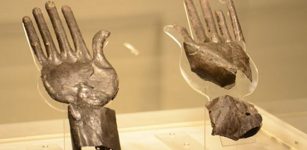 Mystery Of The Silver Hands Discovered In An Etruscan Tomb Full Of Secrets
Artifacts | Jun 12, 2015
Mystery Of The Silver Hands Discovered In An Etruscan Tomb Full Of Secrets
Artifacts | Jun 12, 2015 -
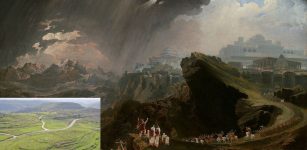 Archaeologists Search For The Tomb Of Biblical Joshua At Khirbet Tibnah
Archaeology | Aug 5, 2022
Archaeologists Search For The Tomb Of Biblical Joshua At Khirbet Tibnah
Archaeology | Aug 5, 2022 -
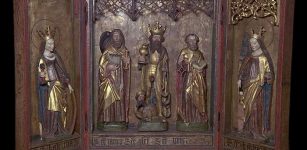 History Of Middle Ages Altarpieces Has Been Re-Written
Archaeology | Mar 10, 2018
History Of Middle Ages Altarpieces Has Been Re-Written
Archaeology | Mar 10, 2018 -
 Ancient Inscriptions Of Babylonian King Nabonidus Discovered In Saudi Arabia
Archaeology | Jul 14, 2021
Ancient Inscriptions Of Babylonian King Nabonidus Discovered In Saudi Arabia
Archaeology | Jul 14, 2021 -
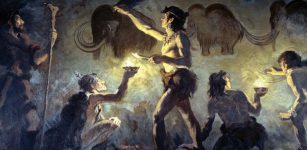 First Carbon-Based Paleolithic Paintings Found In Font-De-Gaume Cave, France Could Be 19,000 Years Old
Archaeology | Dec 29, 2023
First Carbon-Based Paleolithic Paintings Found In Font-De-Gaume Cave, France Could Be 19,000 Years Old
Archaeology | Dec 29, 2023 -
 Viking Ship Found With Unexpected Goods For Unclear Purpose Puzzles Scientists
Vikings | Nov 24, 2024
Viking Ship Found With Unexpected Goods For Unclear Purpose Puzzles Scientists
Vikings | Nov 24, 2024 -
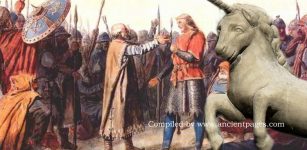 Vikings’ Unicorn Bluff Fooled Europeans For Hundreds Of Years
Ancient History Facts | Apr 24, 2018
Vikings’ Unicorn Bluff Fooled Europeans For Hundreds Of Years
Ancient History Facts | Apr 24, 2018

